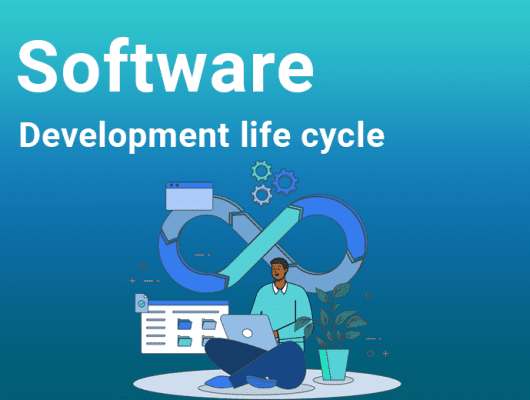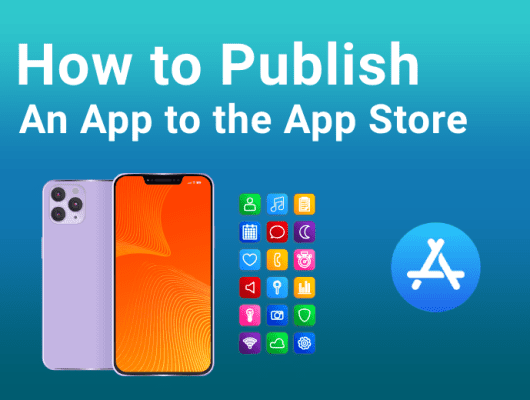
Kotlin vs Java
Kotlin and Java are two popular programming languages used for Android development. While Java has been a longstanding choice, Kotlin offers modern features and a more concise syntax. It is designed to be fully interoperable with Java, allowing developers to use both languages in the same project.
But the question is which language is best for your next project? Are you curious about how Kotlin’s null safety can reduce bugs? Interested in how Java’s vast ecosystem supports development? So, let’s explore the differences between Kotlin and Java to make an informed decision.
What is Java?
James Gosling created Java, which was first released in 1995 while working at Sun Microsystems (which Oracle purchased in 2009). It is an object-oriented, general-purpose, and open-source programming language. Since it is a multiplatform language, it runs on nearly every kind of device, server, and operating system. Furthermore, due to its bytecode compilation, it is compatible with any Java Virtual Machine (JVM).
Why Java?
Java keeps up with the alternatives even if it’s no longer the only officially supported language for Android development and is not the only option for web programming. And since that’s not just because of its venerable age, let’s examine the benefits Java provides. Java’s high scalability, stability, and security are other benefits of its use. This explains why it’s so extensively utilized.
- Extreme security
- Unified device ecosystem
- Seamless performance on Apple devices
- Sourcing generates high revenue
- The JVM automatically manages memory
- Safe to use
- Independent of platforms
- Offers a great deal of community assistance
- Thorough evaluation process, resulting in a delay in the App’s launch
- Choices for customization are necessary
- Java has extensive and complicated syntax
- Voluminous and intricate code
- It does not perform well
What is a Kotlin?
Kotlin was released in 2016, Making it far more recent than Java. It is an open-source language that can function on practically any platform by compiling code to bytecode, which may then be executed on the Java Virtual Machine (JVM). Furthermore, Kotlin projects can utilize libraries and frameworks created in Java.
Why Kotlin?
Programming in Kotlin is a modern, safe, simple, and interoperable language. It offers a systematic approach to writing server-side applications. We may utilize our preferred frameworks and libraries with it, making it compatible with the Java environment. It also saves work and time.
- Extreme security
- Unified device ecosystem.
- Seamless performance on Apple devices
- Sourcing generates high revenue.
- It works with Java code that is currently in use.
- It boosts the output of the team.
- It is simple to maintain.
- It is more dependable and less glitchy.
- Offers a robust API for creating applications.
- Thorough evaluation process, resulting in a delay in the App’s launch.
- Choices for customization are necessary.
- Kotlin’s compilation performance is slow.
- There is a tiny developer community for it.
- There is a high memory consumption.
Table of Contents
Kotlin Vs Java-Key Differences
Given this background, you may be wondering how the development of Kotlin affects Java. Will Kotlin take its place? The answer is not that easy. Diverse viewpoints exist regarding this topic. Let’s first examine the distinctions between the two sides of the argument to comprehend both.
Complete Safety
Java’s infamous NullPointerExceptions can be very bothersome. These exceptions are designed to allow users to assign a null value to any variable. However, let’s say someone tries to utilize an object reference that just so happens to contain a null value. Java’s NullPointerExceptions kick in and create an exception that developers must deal with.
On the other hand, null values cannot be assigned to variables or objects by default in Kotlin. The code will fail at compile time if we attempt to do so. Consequently, Kotlin does not have NullPointerExceptions. Nonetheless, the variable in question can be explicitly marked as nullable if the developer wants to assign a null value.
Programming in a Functional Way
The support for functional programming that Java and Kotlin offer is another important distinction. Although Java 8 included some support for functional programming, Kotlin was built from the ground up to accommodate functional programming ideas.
Kotlin, for instance, provides extension functions, higher-order functions, and lambda expressions. These tools facilitate the writing of expressive and concise code, which can enhance its overall quality.
Functions of Extensions
In contrast to Java, Kotlin lets developers add more functionality to classes without requiring them to inherit from one. In Kotlin, the extension function is executed by prefixing the name of the class (to be extended) with the function name produced using the ‘.’ notation.
In Java, a new class must be created, and its functions must be inherited from the parent class to increase the functionality of an existing class. As stated otherwise, the function of the extension is not accessible.
The code

One of Kotlin’s main advantages is that it requires much less code than Java. Because of its extreme concision, the language makes errors less likely to occur and makes developers’ tasks easier.
Generally, because Kotlin is shorter than Java and requires fewer lines of code to express the same functions, writing massive projects with it is easier. It also understands how to be succinct and direct without sacrificing the readability of the syntax.
Support for Coroutines
Typically referred to as the main thread and in charge of the user interface, components within an Android application operate in the same process and thread by default. CPU-intensive tasks and network I/O are seen as long. The calling thread for each of these operations is blocked until the operation is finished when one of them is started.
Java allows the construction of several background threads to handle lengthy operations, preventing issues on the main thread. However, handling numerous threads is difficult and could result in additional coding problems.
In a similar vein, Kotlin allows the establishment of numerous threads. However, it presents coroutines, a more straightforward and superior alternative.
How do coroutines function? Because coroutines are stackless, developers can write code, pause its execution, and pick it back up later. This allows asynchronous code to appear synchronous while remaining non-blocking. Therefore, coroutines avoid having too many threads by not spawning multiple ones that the developer must handle later. Moreover, they are more concise and understandable than Java’s answer.
Information Classes
In Java, developers must define the variables or fields that hold the data, the constructor, the getter and setter functions for the variables or fields, and other functions like hashCode, equals, and toString.
The truth is that these classes have very little, if any, functionality and are only meant to hold data.
However, Kotlin offers a more straightforward method of creating data-holding classes; you only need to include the “data” keyword in the class description. After that, the compiler will automatically generate the constructor, getter, and setter functions for several fields and variables.
Intelligent Casts
In order to cast an object, the Java developer must verify that the variables’ types match the action.
The brilliant cast feature in Kotlin takes care of casting checks. The “is-checks” keyword in Kotlin’s intelligent compiler automatically handles superfluous casts (with stable values).
Verified Exemptions
On Kotlin, checked exceptions are not supported. As a result, Kotlin does not need exceptions to be caught or declared. What is the benefit of this? Well, that depends.
Java developers have examined the support for exceptions. They must, therefore, identify and report exceptions. This can be time-consuming and annoying at times. Conversely, though, it guarantees error handling and strong code. Thus, checked exception support offers benefits and drawbacks. In the end, it comes down to what each developer values most.
Functional Programming: Lambdas and Higher-Order Functions
As the introduction to the article states, Kotlin is a hybrid of functional and object-oriented programming.
Declarative programming, also known as functional programming, is used to compute mathematical functions. Functional programming principles include lambda expressions and high-order functions.
The first suggests that functions ought to be regarded as first-class entities. As a result, Kotlin code can effectively express functions using a variety of function types. Stated differently, there are multiple methods of operating functions.
Additionally, anonymous functions and lambda expressions can be used with Kotlin. A “functional literal” is a function that passes as an expression immediately without being defined.
Java, on the other hand, is more restricted to object-oriented programming. It has, nevertheless, begun moving toward functional programming. Java 8 introduced lambda expressions, a function that can be created without necessarily belonging to a class. Lambda expressions in Java can be run on demand and provided as objects.
Moreover, Java began to enable high-order functions by introducing lambda expressions. Java links a method to a function, and Java 8 makes it possible for lambdas to return from methods.
Primitive kinds
Primitive type variables in Java are predefined data types rather than objects. Eight primitive data types are available in Java: int, byte, short, double, float, boolean, char, and long. As a result, these variables cannot be objects that come from a class or structure.
Primitive types are not classes, although you can use classes that can wrap up a primitive type value. The developer must make this clear to accomplish it with Java.
In contrast, a primitive type variable in Kotlin is automatically treated as an object as soon as it is initialized.
Open Spaces
Java has public fields, also referred to as non-private fields. They allow the developer to update an object’s representation without having to modify the callers, which can be pretty handy if the callers of an object need to change the object’s representation. In this manner, the fields can be made public, maintaining the program’s degree of maintainability and the public API’s consistency.
On the other hand, Kotlin lacks public fields.
Types of Wildcards
In programming, a question mark (?) is usually regarded as a wildcard, indicating that it may refer to an unknown kind (of variable, field, or parameter).
Contrary to Java, Kotlin does not support wildcards. Instead, it contains type projections and a declaration-site variance.
Implicit Conversions
On the one hand, Kotlin does not support implicit widening conversions. As a result, larger types cannot be created from smaller types. Kotlin developers have to perform an explicit conversion to accomplish the required type conversion to get around this.
Conversely, Java allows for implicit conversions, so developers can avoid using explicit conversions.
Conclusion
To sum up, while Kotlin and Java are fantastic programming languages, they differ significantly. Although Java is a more well-known language with a sizable community and a wealth of libraries, Kotlin appeals to many developers due to its contemporary features and concise syntax.
Java’s performance and library ecosystem make it an excellent choice for enterprise applications. Still, Kotlin’s emphasis on null safety and support for functional programming makes it a fantastic option for modern application development.
The decision between Kotlin and Java will ultimately depend on your application’s particular requirements and the tastes and expertise of your development team. Therefore, it is essential to have a reliable development team or a company. So, for this consider Onyxtec as your Trustworthy partner.
FAQ
Is Java inferior to Kotlin?
While both Java and Kotlin are fantastic programming languages, some key distinctions exist between them. Although Java is a more well-known language with a sizable community and a wealth of libraries, Kotlin appeals to many developers due to its contemporary features and concise syntax.
Is Kotlin either back or front?
Kotlin is perfect for backend development because of its capabilities, such as null-pointer exceptions, coroutines, and static typing. Additionally, many Android developers favor Kotlin because of Google’s official support.




